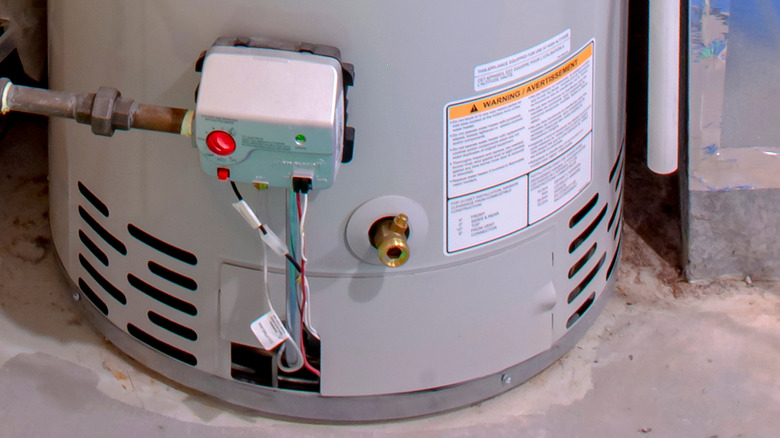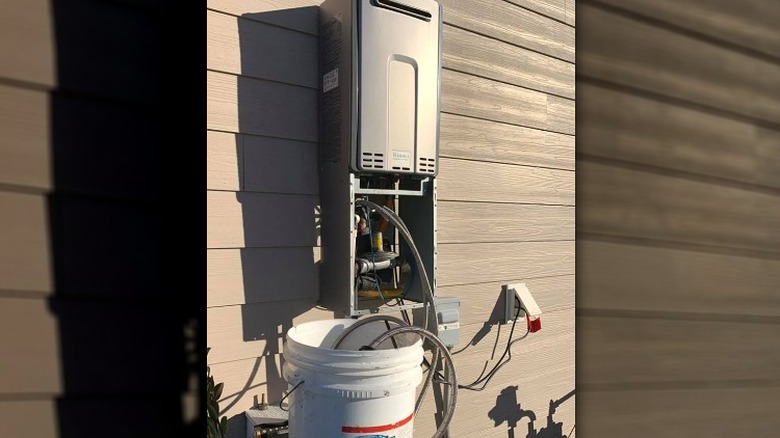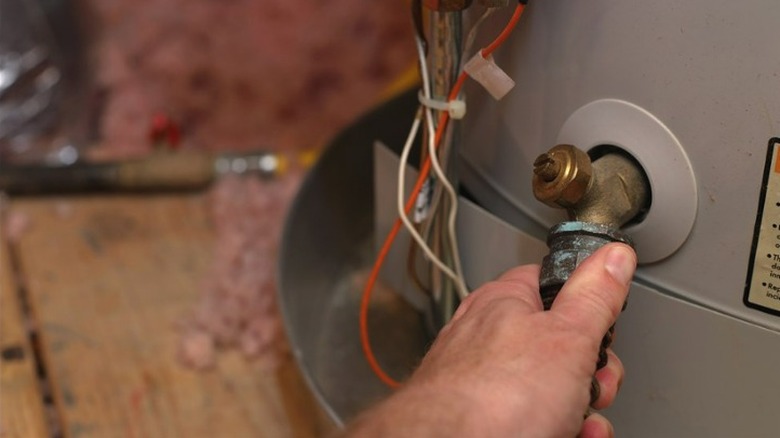How And When To Drain A Water Heater
If you want to extend the life of your water heater, the key (as with all household appliances) is proper routine maintenance. That means engaging in the standard two-step process of draining and flushing the heater, which you should be doing at least once or twice a year, depending on the tank size. Learning how to drain your water heater is simpler than you might think, and all you really need is a garden hose and about an hour's time. To drain a water heater completely, it can take as little as 10 minutes up to half an hour.
Failing to drain and flush your water heater on a routine basis can cause your water heater to malfunction and potentially clog up due to the buildup of naturally occurring sediment, debris, and minerals. Without routine upkeep, you risk shortening the life of your water heater (and surprising someone in your household with a very sudden and very icy shower).
How to drain a water heater
To drain and flush your water heater, first shut off the appliance and turn off the cold water supply. If you don't do the latter, the heater will just keep on refilling, which will get you nowhere. On top of that, wait a few hours at least before you actually start the draining process because the water in the water heater could be hotter than Hades, and getting splashed with scalding water is a real situation.
To drain the water heater, you'll be doing so through a standard garden hose. Attach the hose to the heater's drain valve. Next, somewhere in your house, turn on a hot water faucet; doing so will help to alleviate pressure in the system, which will in turn allow the heater to drain more quickly. After that, open the drain valve and let all the water in the water heater drain out.
Once you've emptied the tank, you'll next want to flush it. To do so, turn the cold water supply back on and allow the new water to drain through the attached hose. Monitor the water flowing through the hose; once the water is clear, the flushing process is complete. Turn the water supply off again, remove the hose, and turn off the water heater's drain valve.
Next, turn the water supply on again and allow the water heater to refill. Monitor the water faucet inside your home; once the water flows normally, you can turn the tap off as well. Lastly, turn the water heater back on.
When to drain a water heater
There are more than a few valid reasons to both flush and drain your water tank periodically. By doing routine cleaning, you'll be able to gauge how healthy the appliance is overall. Armed with this knowledge, you'll get an idea of what might need replacing in the near future. Routine maintenance also keeps the parts of your water heater working optimally, which means fewer service calls and more money saved.
When you clear out the tank, you're also improving the water quality. You're dumping that possibly funky tasting and smelling water (that could be semi-stagnant and possibly growing bacteria) and changing it out for fresh. But you're also flushing out the sludgy buildup at the bottom that has the potential to clog your heater. That layer of buildup also makes it more difficult for the water to heat up quickly, which means flushing and draining also makes your water heater more energy-efficient. That also means you'll be saving more money on your utility bills.
As mentioned, if you're draining and flushing your water heater, aim to do so twice a year. It's recommended you perform this routine ritual once in the spring and again in the fall. If you live in an area with hard water, err on the side of caution and clean it every four to six months.



